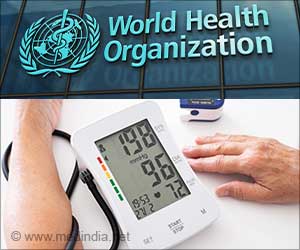Researchers found 73 medical conditions linked to irregular temperature rhythms in a study analyzing data from over 92,000 participants.
- A recent study highlights the potential of continuous wrist temperature monitoring in predicting the risk of various diseases, including type 2 diabetes, hypertension, and liver disease
- The research, which analyzed data from over 92,000 participants, revealed significant associations between irregular temperature rhythms and an increased risk of up to 73 different health conditions
- These findings underscore the importance of maintaining healthy circadian habits and harnessing technology for preventative healthcare
Harnessing Technology for Health Monitoring
Carsten Skarke, the senior author of the study and an associate professor of Medicine in Translational Medicine and Therapeutics, enthusiastically expressed the potential of marrying emerging technology with health monitoring. The study opens new avenues for understanding health risks and prevention by utilizing continuous wrist temperature data.The monitoring process encompassed a holistic view of an individual's circadian and sleep-wake behavior. Additionally, it factored in elements influenced by external conditions, such as the reduction in core temperature during sleep periods. This comprehensive approach allowed researchers to gain a deeper understanding of the participants' physiological responses (1✔ ✔Trusted Source
Diurnal rhythms of wrist temperature are associated with future disease risk in the UK Biobank
Go to source).
Links between Decreased Temperature Rhythms and Diseases. The study yielded intriguing results, revealing significant associations between decreased temperature rhythm and a staggering 73 different disease conditions. Among the standout findings were:
Nonalcoholic Fatty Liver Disease (NAFLD):
Participants exhibited a 91% increased risk of NAFLDType 2 Diabetes:
A 69% increased risk was identified in participantsRenal Failure:
A 25% increased risk for kidney failure was observedHypertension:
An alarming 23% increased risk for hypertension was notedPneumonia:
Participants faced a 22% increased risk of pneumonia
Consistency in the timing of sleep and physical activity emerges as a critical factor in disease prevention, further emphasizing the importance of understanding and harnessing the insights provided by continuous wrist temperature monitoring.
This groundbreaking study demonstrates the potential of technology in revolutionizing health monitoring. The correlation between wrist temperature rhythms and disease risks offers a new dimension in preventative healthcare.
As we continue to explore the intricate relationship between our physiological patterns and health, the integration of emerging technologies promises a brighter and healthier future for all.
- Diurnal rhythms of wrist temperature are associated with future disease risk in the UK Biobank - (https://www.nature.com/articles/s41467-023-40977-5.epdf)
Source-Medindia













